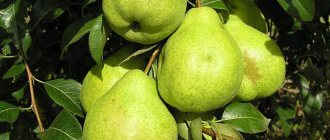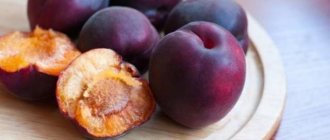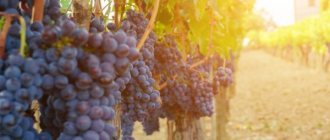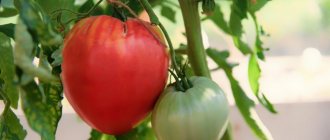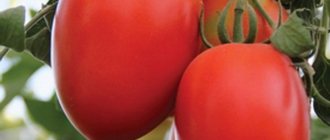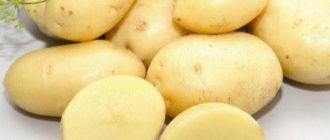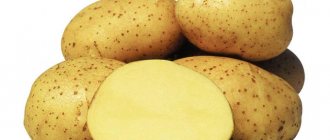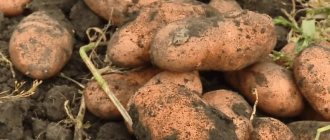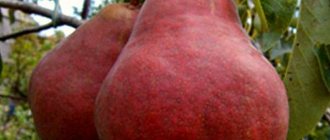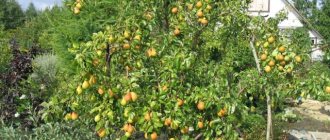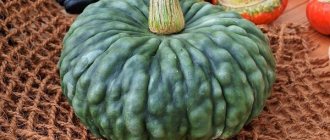Varieties of non-freezing peaches
Everyone loves peaches.
But, unfortunately, growing them is a risky business. In recent years, this crop has not been frost-resistant at all. Often, after 3-4 years the peach dies. It is not only the traders who offer non-winter-hardy varieties who are to blame for this, but also ourselves. Indeed, with the help of agricultural technology, the survivability of trees can be significantly increased.
Who isn't afraid of frost...
Peach is not as sissy as it might seem at first glance. Many varieties in a state of deep dormancy can withstand frosts down to -30... -32 C! Although flower buds can die at -21...-23 C. The buds are not afraid of frosts down to -8... -10 C. And only flowers and ovaries die at frosts of -3 C.
Varieties that can tolerate such temperatures are called highly winter-hardy. In normal years they have no damage after wintering, and in severe winters they freeze slightly.
These varieties include: Golden Moscow, Krasnaya Devitsa, Laureat, Fluffy Early, Juicy, Skazka, Flamingo, etc. Peaches had a particularly hard time in the winter of 2006.
At this time, critical temperatures were recorded twice in winter and two recurrent frosts in spring. This year, both old varieties distinguished themselves: Juicy, Fluffy Early, Early-85, and new ones: Andrey Lupan, Vavilovsky, Harmony, Crimean Autumn, Melitopolsky Yasny, Ambassador of Peace, Refreshing, Starting, Anniversary Early.
There are frost-resistant varieties among foreign ones: Boten Kisev, Veit 1111, Iftikhor, Nectagrand, Reliance, Favorita Morettini, Harbinger, etc.
... and frosts too
But the most resistant to spring frosts were Valiant, Veteran, G. Lebedev, Golden Jubilee, Red Haven, Flamingo, and Nectagrand-4 nectarine. They produced crops even when frosts occurred in mid-May.
When planning a peach garden , experts recommend first of all paying attention to the new products: Vavilovsky, Harmony, Doctoral, Demerdzhinsky, Candidate, Crimean Autumn, Crimean Fireworks, Nut, Refreshing, Ambassador of Peace, Sagdiets, Starting. These varieties increase the period of consumption of peaches by 1-1.5 months and compare favorably with old ones in marketability, transportability and taste.
Pit from peach to apricot
If you cannot get frost-resistant varieties, you can plant a peach with a pit. Such trees, although they are inferior to cultivated ones in terms of fruit quality, will be well adapted to the winters in your area. The disadvantage of this method is that the seedling from the seedling will be the most winter-hardy. That is, the second or third generation grown from seed.
True, the taste often drops so much that peaches begin to resemble apricots in size and taste. And what’s most unpleasant is that seedlings may lose resistance to diseases characteristic of most new varieties.
Bush or bend
Growing peaches is a risky business. It’s good that they begin to bear fruit literally in the second year. In case of severe frosts and freezing, the peach is able to quickly restore the crown and begin to bear fruit again.
We just need to reduce the likelihood of the tree completely freezing by pruning and create conditions for the speedy restoration of the crown if it freezes.
To do this, peaches are cut 20-30 cm above the grafting and a bush with 6-8 branches is formed from the grown shoots. Then, even if half of them freeze in winter, you will not be left without peaches .
Siberian peaches
Peaches are grown even in Siberia. There they are planted at an angle of 45 degrees, bent to the ground for the winter and covered with grass and earth. The bushes have to be heavily pruned every year, preventing them from growing and maintaining the shape of the semi-slate. As a result, peaches take 10-15 years to grow and bear fruit in a rather harsh climate.
Curliness and rationing
The redder the peach , the more frost they can withstand. Therefore, even in the summer, it is necessary to remove some of the weak shoots, giving the remaining shoots the opportunity to ripen better. This work is very important, since peach tends to form a mass of shoots, most of which freeze in winter anyway.
Leave branches no thinner than a pencil; the rest can be cut off, since they will not bear fruit anyway. Winter hardiness greatly reduces peach . This fungal disease affects trees in the spring. If you do not treat peaches with Horus, Strobi or Polychom, then some varieties will be completely without leaves, others will be pale yellow and most of them will freeze in winter. One or two applications before flowering and one after are enough to protect the garden.
Drying by the wind
Peach is a very moisture-loving crop. He does not like drought even in winter. Therefore, they plant it in places protected from the winds. If you do not take into account the effect of winds, then in the spring when pruning you can see that some of the branches are dry, although there are no signs of freezing (the bark is green, not brown). This is the result of the winter wind...
Crop depletion
Even if only 20% of a peach's The fruits literally deplete it and it is not surprising that the next year, after abundant fruiting, such trees freeze out. In years of abundant flowering, it is better to remove 2/3 of the flowers from peaches , and then remove the weaker ovaries.
All three last factors are the main “relatives” of frost. Mainly because of them, peach trees of seemingly frost-resistant varieties freeze out.
Rules for planting peach
In order for the Veteran variety to take root and grow healthy, a number of rules must be followed when planting. Mistakes can even lead to the death of the tree. This is especially true when choosing a place for a peach and adhering to planting dates.
Recommended timing
There is no consensus among gardeners about planting peaches: some prefer to do it in the fall, others in the spring. If you carry out the procedure before winter, there is a risk that the young tree will not have time to take root well and will freeze. Spring planting is risky because the peach will suffer from pests and diseases.
It is not possible to perform this procedure in the fall in all regions. In temperate climates, only spring planting is possible. It makes sense to root a peach in the fall if winter comes in accordance with the calendar and the temperature does not drop below -15 °C. That is, the tree must have 8-10 weeks left before frost in order to get stronger and survive the winter. In autumn, as a rule, there is a larger selection of seedlings, and they also have leaves and a developed root system, which allows us to judge their quality.
The Veteran peach is planted when it enters its dormant period. For southern Russia, northeast and northwestern Ukraine, the recommended period is September 10–15. In the Crimea, Krasnodar Territory and southern Ukraine, Veteran peach varieties can be planted until October 20, and if winter is predicted to come later, then until November 10.
In the temperate climate of the Ural and Siberian regions, peaches do not have time to form ovaries and ripen. Such trees can only be grown there in greenhouses and conservatories.
Choosing a suitable location
Peach is demanding of heat and sunlight. The culture does not tolerate transplantation very well, so you need to choose a place very carefully. The peach tree grows well in heat and drought conditions, but drafts and excessive dampness can destroy it.
They try to place the seedling on the south side of the site. It should not be shadowed by any structures or other trees. On the north side, it is better to protect the peach with a fence or hedge, placing the seedling 2 m from the wall.
The tree cannot be grown in lowlands, because the soil there is often waterlogged and cold air stagnates. Groundwater must pass at least 1.5 m from the surface. Peach trees grow very well on the southern or southeastern slopes of the hill.
The seedling should not be placed in a place where nightshades or melons grew before. Fungal diseases can be transmitted from sunflowers, strawberries, clover and legumes. Rye and oats are good predecessors for peach.
Yield indicators depend on the composition of the soil. Sandy and loamy soils, as well as black soil, are best suited. There is sufficient humidity and a large amount of lime. The peach tree will not grow on saline soils and places where the carbonate content is high.
Selection and preparation of planting material
Selecting a seedling is a very important stage, which determines how healthy and strong the tree will grow on the site for several years. Key points to consider when choosing material:
- It is best to buy seedlings from nurseries located in the area where peach trees will grow.
- You should not take the product at the lowest price.
- You should not purchase a peach too early - it must be dug up during the dormant period, otherwise it will not take root well. In good seedlings, the shoots are covered with bark, and the buds are fully formed.
- The variety must be suitable for the climate of the area in terms of characteristics.
- The choice of the age of the seedling depends on the experience of the gardener - for beginners it is better to take a 2-year-old peach 1.5 m high and with 3-4 branches, but skilled ones will be able to cope with an annual seedling in the form of a twig 1 m high.
- In appearance, the tree should be strong and sturdy, without signs of damage or disease. Peach has a fibrous root system; therefore, a seedling with one root should not be taken. Limp leaves and peeling bark should alert you to the fact that you don’t need to buy such a plant.
If you had to buy a seedling far from the site and need to transport it, it is worth remembering that sudden changes in temperature and humidity harm it. The roots should be wrapped in a wet cloth, covered with polyethylene on top and secured.
Description of peach variety Veteran
The Veteran peach variety was developed in Canada in 1925 and appeared in our country shortly after the war. There is information that in the 1950s. it was registered in the State Register of the country and recommended for the North Caucasus region. However, at present there is no record of this variety in an official document. Nevertheless, Veteran is known to many gardeners in the southern part of Russia; it finds its place both in small summer cottages and in the gardens of large farmers.
The Veteran peach tree is medium in size; As a rule, they, like any other varieties of peaches, try to form them in the shape of a bowl. In this case, the total height of an adult tree is 3.5–4 meters. The crown is quite dense and requires systematic thinning. Perhaps, qualified pruning is the most difficult operation when growing peach of this variety. The fruits are round, with an average weight of about 160 g, bright yellow with a red blush, which in ripe peaches can occupy almost the entire surface. The pulp is yellowish, medium-dense, very juicy, with a strong aroma. The taste is sweet, with a slight sourness, rated as good.
Veteran peach tree is not too tall
The popularity of the variety is mainly due to its high endurance. Of course, it will not be possible to grow peach in the northern regions, but somewhat south of the latitude of Moscow it is often found in amateur gardens. At temperatures around -20 °C, damage to growth and flower buds is already possible, and in the absence of snow cover, damage to the root system. The heat resistance and drought resistance of the variety are rated above average.
The peach bears its first fruits at the age of three, but at this time experts advise not to let it bear fruit: the tree should strengthen its strength until about 5–6 years of age.
The Veteran peach can bear fruit alone: it is quite self-fertile. At the same time, the presence of peach trees of other varieties nearby somewhat increases the yield, which is already considered very decent. Up to 50 kg of fruits are obtained from an adult tree; harvesting in most regions occurs in the second half of August. The purpose of the fruits is universal: they are good both fresh and in the preparation of compotes or jam. Peaches store well and withstand transportation well.
Veteran fruits are quite beautiful and large
The main advantages of the variety are:
- good yield;
- precociousness;
- self-pollinating;
- transportability and safety of the crop;
- resistance to most diseases.
The disadvantage is considered to be the high susceptibility to aphids. In addition, picky gardeners believe that the Veteran peach requires too much work to thin out the crown.
Botanical description and characteristics of the variety
Peach (Prunus persica) is a deciduous tree native to Northwest China. It was first domesticated in this area. But the peach came to Europe from Persia, which is reflected in its Latin name. Belongs to the Pink family. The fruits have a characteristic pubescent skin, yellow-orange or white flesh and a unique peach flavor.
This is a medium ripening variety. Its fruits will ripen by mid-August. Moscow dwarf is a variety that is easy to care for and consistently bears fruit. Its harvest is well stored. It is self-pollinating and does not require other trees to bear fruit.
Did you know? Archaeologists point to the Yangtze River Valley as the place where the first fruits of peach trees may have begun to be harvested.
Description of the fruit and appearance of the tree
The tree reaches a height of 2.5 m. It is considered quite large and fast-growing. It has a back pyramidal crown of medium density.
Characteristics of the Moscow Dwarf variety:
- basic: the variety is resistant to diseases and unfavorable climatic conditions;
- leaves: typical, lanceolate, with a finely serrated edge and a wrinkled leaf blade of light green color;
- flowers: single, pink, medium size;
- flowering occurs in late April or May depending on the region; Fruiting occurs on 2-year-old shoots;
- shoots: easily bending, with brown bark;
- fruits: medium, round, uniform;
- fetal weight: 90–120 g;
- color: yellow-orange with carmine blush;
- peel: slightly pubescent;
- taste: dessert, sweet and sour;
- pit: medium, ribbed, easily removable.
Advantages and disadvantages
The main advantage of the variety is the ability to grow in regions with cold winters. Since the variety has not undergone research for inclusion in the State Register, it is too early to talk about its proven advantages or disadvantages.
Pollinators and fruiting dates
Typically, peach trees live between 10 and 20 years. They bear fruit for 12 years. You can count on a large harvest 3-4 years after planting. Peak yield is observed by the age of 8, and from the 12th year it declines.
Important! For 1-2 years of growth, it is imperative to remove the color or formed fruits to allow the tree to develop a root system. A healthy peach tree can produce up to 30 kg of harvest per year
But usually the yield of peaches is much less. To obtain great returns, it is necessary that the climatic conditions and conditions for its cultivation coincide. Also, trees that are too young or too old will not show good results either.
A healthy peach tree can produce up to 30 kg of harvest per year. But usually the yield of peaches is much less. To obtain great returns, it is necessary that the climatic conditions and conditions for its cultivation coincide. Also, trees that are too young or too old will not show good results either.
Variety immunity
There are no exact data on the variety's immunity to diseases. In terms of frost resistance, the Moscow Dwarf variety can be grown in areas where most trees would have problems due to the harsh climate. It is hardy enough to grow in winter hardiness zone 5 (minimum winter temperature -29°C) and can withstand short-term frosts down to -35°C. Ideal for growing in northern gardens.
Frost-resistant
When growing in regions with harsh, long winters, it is recommended to choose winter-hardy varieties when selecting seedlings.
Vavilovsky
Bred in the Nikitsky Botanical Garden. Variety value:
- resistance to powdery mildew and curl;
- excellent sweet taste of fruits;
- dessert purpose of fruits;
- consistently high productivity.
The trees have a slightly spreading crown up to 5 m high.
Fluffy early
The fruit has a heavily pubescent skin. Plant characteristics:
- height up to 3 m;
- spreading crown;
- the bone does not separate;
- the pulp is juicy, aromatic;
- self-fertile variety.
The value of peach is its early fruit for fresh consumption.
Juicy
Variety with table fruits. Known since 1947. Gives consistently high yields. But disease resistance is low.
Winter-hardy
A productive variety with high frost resistance. The plant can be grown as a bush form. Fruits up to 120 g, tasty, juicy, aromatic. The plant overloads itself with fruits: normalization is required.
Description of peach Veteran
The Veteran peach variety has a medium-sized tree, the height of which does not exceed 4 m. The crown is spherical and dense. The fruits are round in shape, their marketable weight is 135–185 g. The peel of the Veteran peach is bright yellow, with a reddish blush occupying most of its surface. The pulp is not very dense, yellowish in color, juicy, and has a persistent and pronounced aroma.
In the photo, the Veteran peach matches the description:
The Veteran variety was included in the State Register in 1959. Recommended for cultivation in the North Caucasus region: in Kabardino-Balkaria, Krasnodar Territory, and the Republic of Adygea. Veteran peaches ripen well in Crimea.
Reviews from gardeners
According to experienced gardeners, the peach variety “Veteran” is very similar in pomological characteristics to the well-known and well-established variety “Golden Moscow”. The differences are only in the location of the flower buds, and “Golden Moscow” ripens about ten days later and forms larger fruits.
Reviews of the fruits and ratings of the Veteran peach variety are very high. In areas with a high agricultural background and normal crop load on the plant, the average weight of fruits on mature trees reaches 180 g.
Early ripening
As a rule, early varieties are early-bearing. 2 years after planting they produce a harvest. Productivity increases with the age of trees.
Fluffy early
The fruit has a heavily pubescent skin. Plant characteristics:
- height up to 3 m;
- spreading crown;
- the bone does not separate;
- the pulp is juicy, aromatic;
- self-fertile variety.
The value of peach is its early fruit for fresh consumption.
Dagestan gold
Obtained in Dagestan as a result of open pollination. Distinctive features:
- tree size up to 3 m;
- crown spreading, round;
- fruits weigh up to 150 g;
- the taste is delicate, harmonious;
- pubescence is weak.
The value of the variety is its early fruits for universal use.
Greensboro
Bred by American breeders. Distinctive features:
- self-fertility;
- early fruiting (yields harvest 2 years after planting);
- the pulp is white, juicy;
- the taste is excellent (rating 4.6 out of 5 points);
- impossibility of transportation without loss of marketability.
Productivity in 10 years is up to 60 kg per tree.
White Swan
Obtained by Crimean breeders. Distinctive features:
- unpretentiousness;
- excellent taste;
- white skin and pulp;
- self-fertility;
- precociousness;
- yield up to 60 kg per tree.
The tree produces large fruits: up to 200 g.
Morettini's favorite
The variety is early-fertile and self-fertile. Productivity up to 50 kg per plant. The pulp has an excellent dessert taste, juicy and sweet. The value of Favorite is its resistance to fruit shedding after ripening.
Kyiv early
Industrial grade. The tree grows up to 5 m. The variety is early-bearing: the first harvest takes place after 2 years. The fruits are smooth, tasty, juicy. Weight up to 90 g. Productivity up to 60 kg of fruit from one tree.
Growing peach: successful planting and care, recommendations and rules
Peach is easy to grow. Of course, seedlings need proper care, but following our recommendations, delicious fruits and healthy peach trees will grow in your garden.
The common peach or Prunus persica was previously considered a plant of southern latitudes, but selection gives us new opportunities. Modern peach seedlings are frost-resistant, much more tolerant of returning spring frosts. The varietal qualities of peaches released for Ukraine are excellent; they are distinguished by their large fruit, excellent taste, and good pulp properties. With proper agricultural technology, peaches produce annual harvests and bear fruit for at least 20 years, and some trees even up to 50 years. Beginning gardeners often ask, “What year does a peach bear fruit after planting?” Usually for 2-3 years, depending on the properties of the variety and the age of the seedling. Even in the year of spring planting, a peach can bloom, but the first ovary must be removed to give the seedlings a chance to get stronger. Garden designers love to plant peach seedlings not only in the fruit, but also in the decorative part of the garden. These are low trees, up to 2.5-3.5 m, with a spreading openwork crown. Leaves with pointed tips, elongated, with a slight gloss. During the May flowering period, peach trees look as beautiful as decorative flowering trees and shrubs - sakura, almond or plum.
Peaches can come in several garden forms:
- common peach - a familiar fruit with pubescent skin;
- nectarine or naked peach - the skin of which is completely smooth;
- “fig peach” or flattened peach, which is so called for its “disc-like” shape.
The shape of the fruit and the pubescence of the skin do not in any way affect the taste, agricultural technology, or productivity of peaches. Each variety has its own characteristics, but they depend slightly on the shape of the fruit. According to the ripening period, they are distinguished: early varieties (Lesostepnoy), mid-early (Red Haven) and late (Knyazhe Zoloto). Most peach varieties require an additional pollinator. To do this, two or more seedlings of different varieties are planted nearby.
When choosing a planting site, please note that it is not recommended to plant peaches after strawberries, legumes, nightshades, and melons, because These plants have common diseases, you need to wait up to 3-4 years. It is better to avoid proximity to these plants in the peach garden. And if the space does not allow, then it will be necessary to do preventive treatments against diseases.
Late ripening varieties
Late varieties are recommended to be planted in regions with a long warm period. In other areas, the fruits will not have time to ripen.
Fury
The variety produces the largest fruits. The weight of one fruit reaches 450 g. Characteristics:
- winter hardiness up to -28 degrees;
- self-fertile;
- taste rating 4.9 out of 5 points;
- the bone is completely separated;
- The plant is resistant to curling.
This is a promising type of peach.
Frost
Product of American breeders:
- frost resistance up to -26 degrees;
- height up to 3 m;
- fruit weight up to 200 g;
- the pulp of the fruit is yellow, juicy;
- the bone is completely separated.
The advantage is consistently high yield. The fruits have a universal purpose.
Jaminat
Product of a Dagestan breeder. Plant characteristics:
- height up to 3 m;
- fruits weighing up to 160 g;
- mild pubescence;
- the pulp is yellow, juicy;
- the taste is sweet and sour, refreshing.
The variety produces consistently high yields (up to 190 c/ha).
Elberta
The variety has delicious sweet fruits with a bitter taste. Their weight is up to 150 g. But the variety is not frost-resistant. And it cannot boast of disease resistance. Its value is obtaining table peaches.
Irganaysky late
Received in Dagestan. Height up to 4 m. The fruits are sweet and sour, juicy. The bone is completely separated. Fruits of universal use.
Late, frost-resistant varieties
Late varieties of peaches, which have fairly good tolerance to frost, ripen only by the beginning of autumn. These varieties can be harvested by the beginning of October.
Jaminat
Description of the tree:
- height less than 3 m;
- spherical;
- branched;
- dense foliage.
Fruit characteristics:
- elongated, oval;
- weight no more than 160 g;
- yellowish tint with a purple blush;
- pale orange flesh;
- strong peel;
- tart-sweet taste.
The purpose is universal. This variety is characterized by fairly high and regular yields. However, it has average immunity to low temperatures.
Elberta
Description of the tree:
- height less than 3 m;
- spherical;
- branched;
- olive leaves;
- bell-shaped flowers.
Fruit characteristics:
- weight up to 150 g;
- spherical, slightly elongated;
- bright orange with a pinkish blush;
- pale beige flesh;
- fibrous texture;
- tasty and aromatic;
- easily detachable large bone.
Purpose: dining room. This variety of peaches is susceptible to various diseases, but has high immunity to frost and low temperatures. Average yield.
Iranian late
Description of the tree:
- height less than 3 m;
- spherical;
- dense foliage.
Fruit characteristics:
- clingstone;
- yellowish peel with pink blush;
- delicate fibrous texture;
- Not a pronounced sweet taste.
Purpose: dining room. A bountiful harvest. It has average immunity to frost and sub-zero temperatures. Susceptible to fungal infections due to weak protective properties. The fruits are transportable.
Fury
Description of the tree:
- height less than 3 m;
- branched;
- thick, sloppy crown;
- pale green leaves.
Fruit characteristics:
- weighty;
- weight from 250 to 450 g;
- red peel;
- tender and sugary pulp;
- Small size bone, easy to separate.
Purpose: dining room. Has high immunity to low temperatures. High presentation. The fruits are transportable and have a long shelf life. Gives a rich harvest.
Frost
Description of the tree:
- height less than 3 m;
- not branched;
- spherical;
- leaves are oblong shaped.
Fruit characteristics:
- tart and sweet pulp;
- yellowish-orange hue;
- aftertaste with a hint of sourness;
- weight reaches 200 g;
- clingstone.
The purpose is universal. Not susceptible to leaf curl. Good immunity to various fungal infections and low temperatures. Excellent presentation. Average and regular harvest.
Veteran
Description of the tree:
- spherical;
- oval shaped leaves;
- height no more than 4 m;
- dense foliage;
- branched.
Fruit characteristics:
- spherical;
- weight reaches 180 g;
- yellow tint;
- watery pulp;
- sugary taste with a hint of sourness.
Purpose: dining room. It is highly resistant to frost. High and regular harvest. The fruits are transportable. Practically not susceptible to diseases. The harvest is average.
Variety "Ruby Prince"
The “Ruby Prince” peach variety was bred by American breeders and belongs to the mid-season industrial crop.
Main qualities:
- The tree produces large fruits weighing from 150 to 300 grams.
- The taste is excellent - the peaches are juicy, fleshy, sweet and sour with yellow flesh.
- High transportability and long-term preservation of its presentation make it a good variety for growing on large plantations.
- Fruit ripening occurs in mid-July.
- Trees of this variety are distinguished by their great growth and high yield.
The “Ruby Prince” variety is suitable for those gardeners who decide to export their garden produce to the market. The fruits of this variety are suitable for canning, but most often they are eaten fresh.
Care instructions
As a rule, fruit trees that are weakened as a result of improper care are most often affected by pests. The “Veteran” variety peach belongs to the unpretentious category, and proper care helps reduce the risk of diseases and pests and reduces the need to use chemicals:
- after planting, peach seedlings must be watered abundantly, and then the tree trunk circles are mulched with a 10 cm thick layer of sawdust or peat;
- peach trees are very responsive to heavy watering, but it is very important to take into account the moisture capacity of the soil on the site;
- timely feeding of peach in the spring with nitrogen-containing fertilizers allows you to most effectively activate all vegetative processes of the fruit crop;
- In the spring you can use humus for fertilizers, and in the autumn it is preferable to apply potassium-phosphorus fertilizers to peach trees.
Peach aftercare
Peach Veteran requires moisture in the soil. Fertilizing is necessary in the spring - nitrogen-containing fertilizers are applied. Humus is also used. In autumn, the tree is fertilized with potassium-phosphorus fertilizers.
If the seedling is well developed, then pruning is done immediately. Veteran peach requires crown formation because it tends to thicken. The pruning procedure is carried out from the very beginning of the appearance of the buds until they open. In the fall, after harvesting, the tree needs sanitary pruning - removing dry and diseased branches.
Attention! The crown of the Veteran peach variety is formed from the first year and is completed after 4 years. In summer it is not pruned unless necessary.
Reasons why pruning is necessary:
- maintaining a balance between the crown and roots;
- ensuring tree health;
- the peach will enter the fruiting season faster;
- Convenience when harvesting and processing wood.
Peach is a heat-loving crop, so in regions with cold winters, it must be covered. This must be done if the temperature remains below -20 °C for more than a month. The main rule is to use natural materials that allow air to pass through. Usually the trunk is wrapped in burlap and earth 30 cm high is poured nearby. This will also protect the tree from rodents. The shelter is removed when the temperature is fixed at +5–10 °C.
Features of cultivation and subtleties of care
The Veteran peach is a typical representative of the species, but it is characterized as an unpretentious variety. Therefore, caring for it is relatively easy. Water the peach 3-4 times per season, spending up to 6-8 buckets of water on an adult tree. It is important to wet the soil to a depth of 40–50 cm. Watering is carried out in the morning or evening. It is advisable to loosen the soil after watering. Important in the life of a tree are waterings carried out a month before the fruits are fully ripened and before the onset of frost.
Mature trees are watered infrequently, but abundantly
Fertilizer is applied annually. Organic fertilizers are used infrequently; they are mainly fed with mineral compounds. In early spring, to intensify tree growth, it requires 60–80 g of urea; in summer, any complex fertilizer is applied. If a slowdown in growth is noticed, it is more effective to fertilize by spraying the leaves. During fruit ripening, it is advisable to spray the tree with a solution of potassium fertilizer (for example, 30 g of potassium sulfate per 10 liters of water). In the fall, superphosphate and any potassium salt are buried in the tree trunk circle (30–40 g per 1 m2).
Sowing green manure at the very end of summer gives a good effect.
The formation of the crown is carried out during the first four years after planting the tree. Formative pruning is performed in early spring. It is most convenient to make a bowl-shaped tree from the Veteran peach: without a pronounced conductor, with 6–7 skeletal branches looking in different directions. Sanitary pruning is possible at any time of the year, but it is better to do it after leaf fall. Covering all large wounds with garden pitch is mandatory.
It takes 3–4 years to form a bowl
Even in the southern regions, the Veteran peach requires preparation for winter. They clean the tree of dry branches and dead bark, lightly hill up the trunk, whiten it, and carry out water-replenishing irrigation. Where there are severe frosts, be sure to wrap the trunk and bases of skeletal branches with spunbond or burlap; The use of coniferous spruce branches has a good effect.
Winter-hardy varieties of peaches
The winter-hardy peach, varieties of which were bred by the best breeders in the world, has long established itself as a tree suitable for industrial and personal cultivation in regions with harsh winters. Among the cold-tolerant varieties there are early and late varieties.
- One of the most famous in this category is the domestic peach variety “Fluffy Early” (1932). It easily tolerates frosts down to -30 degrees and is time-tested. Its fruits ripen by mid-July and are round and cream-colored. Used for preserves, jams and raw consumption. To improve the taste of the fruit, it is recommended to form the crown of the tree in the form of a bowl. Due to its ease of care and resistance to diseases, it is suitable for beginner gardeners. To avoid leaf curl, which it sometimes suffers from, experienced gardeners spray the tree with a fungicide every 4 years.
- Peach of the “Juicy” variety, also domestically produced, belongs to the early frost-resistant species. The tree can withstand frosts down to -30, is resistant to powdery mildew and rarely suffers from leaf curl. Loved by gardeners for its ability to quickly grow shoots in spring and the unique taste of the fruit. Peaches grow juicy, with white, aromatic pulp, weighing up to 130 g. The yield is so high that it is often necessary to pick off unripe fruits so that the branches do not break under their weight.
- The “Zimostoykiy” variety of peach, which was grown in Ukraine from a seed, has special properties, while retaining all its maternal qualities. This tree can withstand frosts down to -40 degrees, and its roots, branches and flower buds may freeze, but it is so strong that it recovers in a year or two. The fruits of the tree are large, up to 200 g, and the yield is so high that experienced gardeners cut off the ovaries in advance. It is recommended not to plant other types of peaches or stone fruits next to this variety.
All of the listed peach varieties were bred for the sole purpose of withstanding severe frosts, so they can be safely planted in climates with short summers and long cold periods.
Medium ripening
Mid-ripening varieties of peaches most often ripen around mid-August and can continue until the end of September. Fruiting begins somewhere in the 3-4th year of planting.
Stavropol pink
Description of the tree:
- not branched;
- height no more than 4 m;
- massive leaves;
- miniature purple inflorescences.
Fruit characteristics:
- whitish fibrous pulp;
- round shape;
- loose pale green peel with a scarlet blush;
- sour aftertaste;
- a small seed of a greenish tint.
Purpose: dining room. Gives a rich harvest. Highly resistant to low temperatures. Susceptible to fungal diseases. Slowing fruit growth during drought. Constant thinning is necessary.
Ambassador of Peace
Description of the tree:
- bell-shaped flowers;
- branched;
- lush rounded crown.
Fruit characteristics:
- yellowish flesh;
- dense, pronounced fibers;
- weight reaches 160 g;
- round;
- large bone, difficult to separate;
- delicate sugary aftertaste.
Purpose: dining room. High immunity to low temperatures and resistance to diseases and harmful insects. A bountiful harvest. Peaches tolerate transportation well and have a long shelf life.
Hryvnia
Description of the tree:
- vigorous;
- spherical;
- height less than 3 m;
- branched.
Fruit characteristics:
- small;
- weight reaches 90 g;
- yellowish tint with a velvety texture;
- juicy pulp;
- small bone.
Purpose: dining room. High immunity to low temperatures and diseases (especially powdery mildew). Peaches tolerate long-term transportation well. With proper care, it begins to bear fruit ahead of schedule.
Ruby Prince
Description of the tree:
- vigorous;
- slightly spreading crown;
- large leaves.
Fruit characteristics:
- weight can reach 170 g;
- ruby or burgundy hue;
- tart fibrous pulp;
- astringent aftertaste;
- spherical;
- The bone is practically not separated.
The purpose is universal. It has fairly good immunity to fungal infections and low temperatures. Long shelf life. Good presentation. Prone to curling. We do not tolerate drafts.
Fig peach
Description of the tree:
- height reaches 5 m;
- rose-shaped;
- branched;
- purple flowers reminiscent of rose hips;
- lanceolate leaves.
Fruit characteristics:
- disc-shaped;
- sugary and tart aftertaste;
- orange-red with a crimson blush;
- medium-thick peel;
- weight up to 170 g;
- a small bone, practically inseparable from the pulp.
The purpose of the Fig peach is for table use. It has low immunity to frost and fungal infections. The fruits are not transportable, and they have a fairly short shelf life.
Cardinal
Description of the tree:
- thick round crown;
- small height;
- oblong leaves.
Fruit characteristics:
- weight no more than 150 g;
- orange, almost red hue;
- pronounced aroma;
- juicy fibrous pulp;
- sour aftertaste;
- an easily detachable small bone.
The purpose is universal. Average immunity to low temperatures. Needs insulation before frosts. The harvest is average. It is practically not susceptible to diseases (especially powdery mildew), and has excellent immunity to the harmful effects of insect pests.
Kremlin peach
Description of the tree:
- tall;
- branched;
- oval or rounded crown.
Fruit characteristics:
- orange hue with scarlet blush;
- weight up to 200 g;
- dense pulp;
- rounded;
- not pronounced juiciness;
- sugary soft taste;
- thin peel;
- an easily detachable small bone.
Purpose: dining room. This variety adapts perfectly to any temperature and is highly resistant to various diseases. Demanding about feeding. A bountiful harvest. Reacts negatively to waterlogging.
Golden Moscow
Description of the tree:
- height reaches 3 m;
- spherical crown;
- pink flowers;
- lanceolate leaves.
Fruit characteristics:
- yellowish-beige pulp;
- high juice content;
- pronounced sugary aftertaste;
- small bone, easily separated;
- dense peel.
The purpose is universal. Rich and regular harvest. High immunity to frost. Excellent presentation. The fruits tolerate transportation well. Immunity to fungal diseases, in particular, is not susceptible to powdery mildew.
Siberian
Description of the tree:
- height can reach 5.5 m;
- dense foliage;
- rounded crown.
Fruit characteristics:
- the most delicate juicy pulp;
- rounded;
- yellowish tint with pink blush;
- fresh honey aroma;
- easily detachable bone;
- weight up to 70 g.
The purpose is universal, perfect for preservation. Average but regular harvest. Highly resistant to low temperatures. Short shelf life (less than 14 days).
Donskoy
Description of the tree:
- rose-shaped;
- height up to 4 m;
- medium height;
- neat oval crown.
Fruit characteristics:
- weight up to 80 grams;
- creamy pulp;
- yellowish-scarlet peel;
- easily detachable bone;
- soft sugary aftertaste.
Purpose: conservation. Used for making jams and preserves. High resistance to frost. Abundant harvest. It is afraid of drought, so regular watering is required. Not susceptible to curling and fungal diseases.
Collins
Description of the tree:
- height no more than 3.5 m;
- spherical;
- green elongated leaves.
Fruit characteristics:
- weight up to 155 g;
- pale orange with scarlet blush;
- pronounced velvety;
- the bone is difficult to separate;
- fragrant.
The purpose is universal. The fruits are transportable and have a long shelf life. Practically not susceptible to fungal diseases. With poor care, the leaves curl. Demanding about feeding.
Saturn
Description of the tree:
- rose-shaped;
- branched;
- single flowers;
- small leaves;
- vigorous.
Fruit characteristics:
- weight reaches almost 100 g;
- disc-shaped;
- creamy shade;
- fibrous and astringent pulp;
- spicy taste;
- the bone is small.
Purpose: dining room. It has a fairly high immunity to frost. Average yield is typical. Peaches tolerate transportation well. High presentation.
Diseases and pests, combating them
One of the main advantages of the Veteran peach is its extremely high resistance to diseases, including the most dangerous ones: clasterosporiosis and cytosporosis. It has somewhat less immunity to powdery mildew. It can appear as early as May, when a gray-white coating appears on the tops of young shoots, after which the leaves curl and fall off, after which it is time for the shoots themselves to dry out. The disease can also spread to fruits. The disease is not fatal, but it greatly weakens the trees and affects productivity and winter hardiness. Severely affected shoots should be pruned and burned, and trees should be sprayed with antifungal drugs at the first signs of damage. Immediately after flowering, Topaz and Thiovit-Jet are considered the most effective; in the summer it is better to use Fitosporin.
Powdery mildew can also attack fruits
Much more often, the Veteran peach is harmed by the peach aphid. Preventative measures include ordinary sanitary measures (keeping the tree in order and the tree trunk clean). When a pest appears, you can use folk remedies (spraying with infusions of tobacco dust, garlic, wormwood, etc.), but this insect multiplies so quickly that you usually have to resort to store-bought preparations. Fortunately, most conventional insecticides (for example, Iskra or Inta-Vir) are effective against aphids, but Fitoverm and Biotlin are considered less dangerous to humans. Any medications must be used strictly according to the instructions on the package.
Peach aphids are somewhat different in appearance from others
Aphid protection
You should start protecting the “Veteran” variety peach from major diseases and pests in the autumn-winter period. It is imperative to prune shoots and branches that have dried out and are damaged by pests or pathogens.
Among the main and most common pests of peach trees, the striped peach aphid (Myzodes persicae) should be noted. The optimal temperature regime for the development of this pest of fruit crops is 24°C.
The maximum number of aphids on fruit plantations is observed in mid-summer, after which the number of individuals sharply decreases and increases again only in the first ten days of autumn. To destroy plant parasites on the site and protect garden plants as effectively as possible, you should adhere to the following basic recommendations:
- destroy weeds, preventing them from entering the active phase and filling the areas around fruit trees;
- promptly cut out root shoots, as well as regularly remove fatty shoots, which are especially actively populated by plant parasites;
- in early spring, even before the stage of mass bud bursting and in the presence of positive air temperatures, fruit trees are treated with highly effective ovicides, as well as the crown is sprayed with insecticides.
The most effective against peach aphids are drugs based on cypermethrin or permethrin. It is allowed to treat plants with Iskra or Intavir, which not only decompose as quickly as possible, but also do not cause addiction to aphids.
Among the folk methods of combating peach aphids, treating garden plantings with an infusion of tobacco, garlic, wormwood and wood ash is very effective.
Planting and subsequent care
Planting and care
The time for planting the Golden Moscow peach depends on the climate in the region. If we are talking about the southern regions, then autumn is suitable, if we are talking about the northern regions, then spring. This tree loves warmth and plenty of sunlight, so the planting area should be open, not darkened. It is advisable to choose sites on the south side.
A hole for planting is dug in 2-3 weeks. With a depth of a meter, it should be 60x70 cm in size. It is advisable to make a drainage of 5-10 cm to drain excess water. On the day of planting, humus mixed with soil is laid out on the bottom. Next, the tree is installed and sprinkled with soil on each side. It is important to ensure that the roots do not bend! After the hole is filled, the earth is compacted, watered with warm water and covered with a layer of straw or pine bark.
Interesting! Peach Golden Moscow is recommended for everyone who does not like to treat trees with chemicals to increase productivity or to prevent pests and diseases. It is persistent and produces a good harvest, so treatments with any preparations are carried out very rarely!
- Watering is necessary once every 2 weeks. This is quite enough. Although it all depends on the type of soil and climate - the drier, the more water.
- No more than 4 feedings are carried out per season. The type of fertilizer can be taken at your discretion, but so that there is more nitrogen in the spring, phosphorus and potassium in the summer, and potassium in the fall.
- Treatment for pests is rarely carried out, since the tree does not often get sick. Treatment can be carried out with different substances, but it is recommended to use simple, folk tinctures from the moment of planting 2 times a year (spring and autumn). They are absolutely safe for both trees and humans and are very effective when it comes to prevention.
- Formative pruning is carried out either regularly (in spring and autumn) or as needed. Of course, gardeners recommend not to neglect it, but if there is no time, this will not cause the tree to bend. The main thing is to ensure that there are no sick or damaged pagons; they must be cut off every year, and the cut areas should be treated with garden pitch or iron sulfate!
- Peach Zolota Moscow can withstand cold down to -25 degrees, so it is not often insulated for the winter. Although mulch spread in the root zone will definitely not be bad. If there is an opportunity and desire, it is worth pouring a layer of humus, peat or compost into the root circle for the winter. These substances will not only insulate the earth, but will also overheat in the winter, and in the spring they will become a nutrient medium for the crop.
Planting a tree: step-by-step instructions with photos
Planting for this variety of peach is standard and does not differ from that of most other peach varieties. In the south, peach is often planted in the fall, after leaf fall. In the middle zone, there may be problems with growing peach, but if you want to experiment, it is better to plant in the spring, while the seedling is still dormant. For any peach you need to find a place where it will be protected from the winds. The soil required is loose, breathable, of average composition, with low groundwater. Peaches are often planted on artificial mounds.
The site must be landscaped, that is, the rhizomes of perennial weeds must be eliminated during the process of deep digging of the soil. When digging, small doses of humus are usually added, despite the fact that the main application of fertilizers is carried out in the planting hole. The pit itself is prepared in advance; its dimensions are approximately half a meter in all directions. In case of too heavy soils, the depth is increased, and a drainage layer of crushed stone or pebbles is placed at the bottom. The removed fertile soil is mixed with fertilizers and returned back. Use 2-3 buckets of humus and a couple of handfuls of wood ash. If the soil is dry, pour out a couple of buckets of water. After 2–3 weeks you can plant. They do it as follows.
- Dip the roots of the seedling into a clay mash.
Clay mash significantly speeds up the establishment of seedlings
All roots should be positioned without tension
When planting, it can take a lot of water, 3-4 buckets
Mulch can be any loose organic material
Before the frosts, even in warm areas, it is worth wrapping the stem with non-woven material or at least with old tights. It is also possible to slightly plant the tree for the first winter.
